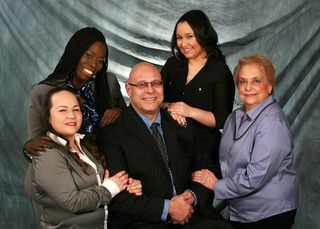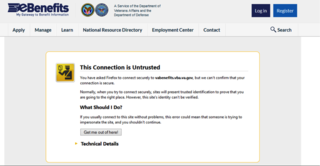In estate planning, your clients aren’t just hiring you for your legal knowledge. They’re placing their trust, and their legacy, in your hands.
But long before they ever sit across from you in a conference room or show up on a Zoom call, they meet you online. Your website is their first glimpse into who you are, what you offer, and whether you’re the right attorney to guide them.
Read more: Your Website Is Just the Beginning: Why Ongoing Marketing Matters for Estate Planning AttorneysAnd yet, a website is not enough.
A beautiful, well-written site will help, but if it just sits there without a marketing strategy to support it, you’re leaving opportunity on the table.
In this post, we’ll explore:
- Why a high-quality, current website is essential for estate planning attorneys
- How failing to maintain your website can quietly harm your practice
- Why marketing can’t be an afterthought anymore
- How Lawyers With Purpose supports firms with tools, strategy, and systems designed to turn websites into revenue
Whether you’re a solo practitioner or running a multi-attorney firm, your digital presence plays a critical role in your growth—and it’s time to make sure it’s working for you.
The Website Is the New Waiting Room
Most clients begin their estate planning journey online. They might search for “estate planning attorney near me” or “do I need a will or a trust?” and if your firm doesn’t show up at that moment, you’re already out of the running.
Your website functions as:
- A digital handshake
- A 24/7 receptionist
- A hub for information, education, and conversion
But more importantly, it sets the tone. If your site is outdated, confusing, or slow to load, it signals that your firm may be behind the curve.
On the other hand, a professional website with clear messaging, intuitive navigation, and valuable content helps potential clients feel confident before they even reach out.
But the Website Alone Doesn’t Drive Growth
Let’s be clear: even the best-designed website won’t generate leads if no one sees it.
Too often, estate planning attorneys fall into the trap of treating their site like a one-time project. They launch it, maybe post a few blogs, and hope it attracts traffic. But a website without an ongoing marketing strategy is like a car with no fuel.
To drive growth, your site needs support from a consistent marketing system that:
- Attracts new visitors through search and content
- Captures leads with compelling calls to action
- Nurtures relationships with email follow-up
- Converts qualified prospects into paying clients
And that system doesn’t have to be complicated. But it does have to be intentional.
The Risks of Letting Your Website Sit Idle
Failing to maintain or update your website can lead to several business challenges that go unnoticed until it’s too late:
1. Outdated content signals neglect.
If your blog posts are from 2019, your readers may wonder whether you’re keeping up with legal trends or even actively practicing.
2. SEO performance declines.
Search engines reward fresh, relevant content. Without regular updates and optimization, your site will gradually fall in rankings.
3. Missed client expectations.
If your site doesn’t clearly outline your services, pricing model, or approach, you risk attracting the wrong leads—or losing the right ones.
4. Missed conversion opportunities.
Broken links, slow loading times, or confusing layouts can frustrate visitors and cause them to leave before contacting you.
In short, your website is a living part of your business. And like any living thing, it requires regular care.
Marketing Is Not Optional Anymore
In the past, estate planning practices could grow on referrals alone. But today’s legal consumers are more digital, more skeptical, and more selective than ever.
Your competitors aren’t waiting around. Many are investing in social media, blogging, email marketing, webinars, and targeted ads to reach the exact same clients you’re trying to attract.
To stay competitive, you need:
- A professional brand image across all channels
- A pipeline of educational content that positions you as the trusted authority
- A lead generation and follow-up system that works while you’re in client meetings
- Performance tracking tools to know what’s working—and what’s not
That’s where the Lawyers With Purpose Marketing Membership comes in.
How LWP Helps You Build a Marketing System That Works
At Lawyers With Purpose, we understand the unique challenges estate planning attorneys face when it comes to marketing. You’re busy managing client work, compliance, team training, and firm operations. Marketing often ends up last on the list.
That’s why we created a dedicated Marketing Membership to make marketing more accessible, more effective, and more aligned with your firm’s long-term goals.
This membership can be added to any LWP plan, or accessed through our Growth and Robust membership levels and gives you access to both foundational and advanced marketing tools.
Let’s look at what’s included.
The Do-It-Yourself Marketing Toolkit
For attorneys ready to take control of their marketing without starting from scratch, the DIY Toolkit includes:
- Website Lead Generation Booster Packages
Pre-written content and strategies focused on estate planning, elder law, and probate to help you attract more leads directly from your site. - Monthly Newsletters
Keep in touch with your audience and stay top of mind with customizable, client-friendly newsletters. - Professional Brochures
A full library of printable and digital brochures that communicate your services clearly and credibly. - Blog Library
Dozens of pre-written blog posts that you can use as-is or personalize to your voice and region—saving hours of content creation time. - Workshop Email Follow-Up Series
Turn workshop attendees into clients with a complete series of follow-up emails designed to educate and drive action.
These resources help eliminate guesswork and ensure your messaging stays consistent, professional, and client-centered.
Strategic Marketing Services (Done-With-You and Done-For-You)
Depending on your membership level, LWP also offers access to a suite of personalized services:
- Marketing Strategy and Consulting
Work directly with legal marketing experts to create a step-by-step plan tailored to your firm’s goals and budget. - Branding and Image Development
Position your firm visually and verbally to stand out from competitors in your local market. - Workshop Marketing Support
Get help promoting live or virtual events to maximize attendance and ROI. - Mass Media and PR Guidance
From local news outreach to advertorials, we’ll help you find new exposure opportunities. - Email, Blog, and Social Media Services
Options for assistance or outsourcing, depending on your firm’s capacity. - Digital Advertising and Lead Generation
Get expert help with campaigns that drive targeted traffic to your site and convert that traffic into leads.
This full-spectrum support is especially powerful when paired with your existing website and intake process—bringing your online presence to life with fresh content and real-world results.
Relationship Management System (RMS)
Websites and marketing bring in new leads, but referrals are still one of the most powerful (and profitable) sources of clients.
Unfortunately, most attorneys struggle to create and maintain strong relationships with allied professionals. That’s where LWP’s proprietary Relationship Management System (RMS) changes the game.
RMS gives you a proven, repeatable framework for:
- Identifying the right referral partners
- Structuring conversations to demonstrate value and build trust
- Tracking referrals and analyzing results
- Measuring the health and ROI of each professional relationship
It’s a system that works quietly in the background to build consistent referral pipelines—one of the smartest ways to grow your practice without increasing ad spend.
The Investment That Pays for Itself
The LWP Marketing Membership is available for just $497/month—and it’s structured to help you see results that far exceed that investment.
Included in this monthly fee:
- Monthly strategy sessions with marketing experts
- A customized roadmap aligned to your goals
- KPI tracking and reporting tools
- On-demand tools to support workshops, online campaigns, and more
- A consistent stream of actionable guidance and proven content
If you’re part of the Growth or Robust LWP memberships, this marketing support is already included. That means you get both the legal tools and the marketing horsepower needed to grow and sustain a thriving estate planning practice.
Your Website Isn’t the Finish Line—It’s the Starting Line
You don’t need to be a marketing expert. You just need the right tools and guidance to make sure your website and digital strategy are working as hard as you are.
Your clients are online. They’re searching for answers. And they’re deciding—often in seconds—whether to trust you with their most personal, important life decisions.
Let your website show them who you are. Let your marketing bring them to your door.
And let Lawyers With Purpose give you the support you need to make it all work.
Ready to build a system that attracts, educates, and converts your ideal clients?
Reach out to the LWP team to learn more about the Marketing Membership and how it fits into your practice’s growth plan.













